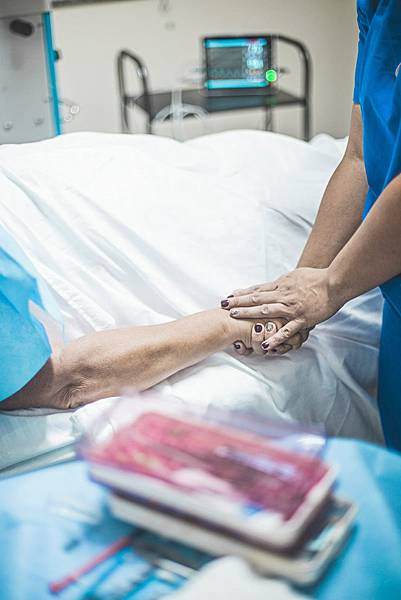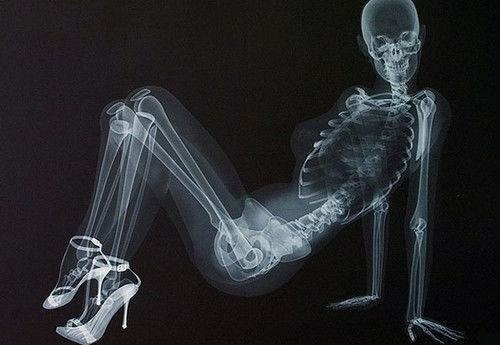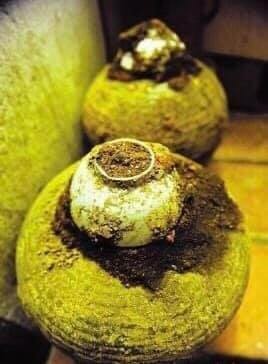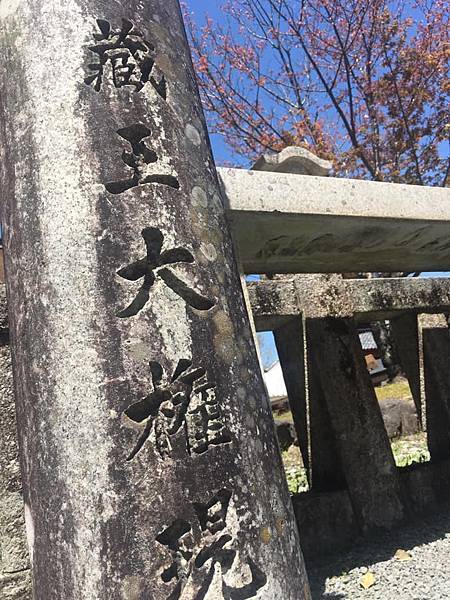
靈氣在醫療上的科學實驗證據
作者:Ann Linda Baldwin 安琳達鮑德溫博士
第一次給予和接受過靈氣的人立即就可以知道能量是甚麼感覺,而且它可以讓一個人的擔憂與不安在一次靈氣治療後就消失了。不過,沒有體驗過,甚至沒有聽說過靈氣的人,自然會更加懷疑,不願冒險進入這個未知的領域。
我們真正更需要的是用科學的證據去表明靈氣可以做什麼來促進健康。幸運的是,靈氣研究中心 (CRR) 建立了一個易於訪問的網站 (www.centerforreikiresearch.org),以促進人們對靈氣的科學認識。這個網站提供了在同行評審期刊上發表的循證研究列表以及每項研究的重要摘要。該資料的清單是最新的,目前包括 33 項研究。而研究摘要是通過使用 CRR 開發一項名為"試金石過程(Touchstone Process)"的程序與步驟,在實驗設計、方法、結果、統計和結論等各方面,仔細分析每項研究的品質與數量而產生的。
以下是來自各項研究結果的有力摘錄(根據上述的標準,於試金石過程評分結果為“非常好(Very Good)”或“優秀(Excellent)”)來證明靈氣對身體的積極影響。並以此讓我們知道有初步的科學證據表明靈氣可以減輕壓力、疼痛、抑鬱和焦慮,並且可以幫助輕度阿茨海默氏症(Alzheimer)患者在一定程度上克服他們的認知障礙。
靈氣可以活化副交感神經與迷走神經
靈氣最常被報導的好處可能是它可以減輕壓力。身體中最先出現壓力的反應部位之一是心臟和血液循環。心率和血壓在壓力期間都會增加,而這些反應是由心臟的交感神經活動增加引起的。另一方面,副交感神經或迷走神經的活動增加會導致心臟放鬆。研究表明,靈氣可以減輕人類和動物心臟的壓力反應。 Friedman et al (2010) 的實驗發現,當護士給與 12 名自急性冠狀動脈綜合徵(一種冠狀動脈阻塞的疾病)中恢復的患者靈氣治療時,迷走神經變得更加活躍,表明有放鬆作用,這反映在心率的變化性。這是一個好兆頭,因為增強迷走神經活動的藥物,如β-腎上腺素能阻滯劑(beta-adrenergic blockers),可以改善這類心臟病患者的預後。因此,在這種情況下,靈氣與已知有效治療心臟病的藥物具有相似的效果。本實驗與聽冥想音樂(13 名患者)或剛剛接受標準治療(12 名患者)的患者組的結果相比,迷走神經活動的增加數據具有統計學意義。不幸的是,這項研究沒有包括一個假靈氣組,也就是其中一個未經靈氣訓練的人會模仿靈氣的手部姿勢,因此我們不知道僅觸摸患者而不給予靈氣是否會產生相同的效果。
靈氣可降低心率
而對於動物施作靈氣的研究提供了特別可靠的數據,因為動物都被飼養在相同的受控條件下,因此消除了人類研究中存在的飲食和生活方式的差異。這意味著可以更容易明確解釋其實驗結果。 Baldwin 及其同事 (2006, 2008) 的研究中表明,與假靈氣組相比,靈氣組顯著降低了應激對大鼠的生理影響。在之前的實驗中,Wilson 和 Baldwin (1998) 發現他們的研究大鼠因居住在嘈雜的環境中而受到壓力,並且這種壓力會在體內以細胞損傷的模式表現出來。 Baldwin 想知道給予老鼠靈氣是否會 (i) 減輕它們的壓力並 (ii) 治愈損傷,因此她設計了實驗來驗證這一假設。在這一項研究 (Baldwin et al, 2008) 中,一名靈氣治療者坐在三個籠子中的每一個前面,每天將靈氣發送給每個籠子裡的一對老鼠 15 分鐘,持續五天。靈氣顯著降低了應激大鼠的平均心率,平均降低了 6%,而假靈氣組沒有效果。靈氣和假靈氣都沒有降低血壓。靈氣降低心率而不是血壓的原因之一可能是血壓取決於多種因素,包括心率、心臟收縮力以及血管收縮或鬆弛的程度,因此靈氣必須影響所有這些因素都是為了降低血壓。可能需要更長的靈氣療程才能實現這些變化。
靈氣修復腸黏膜與腸漏症
在另一項研究中,Baldwin 等人的實驗 (2006) 表明,受嘈雜環境壓力的大鼠也造成了腸系膜中的血管損壞,腸系膜是將腸道固定在一起的片狀生物組織。這些微小血管中的受損區域會將較大分子的蛋白質中或白蛋白滲漏到人體的血液中。在通常的狀況下,白蛋白會包覆在這些血管中,不會滲漏到組織裡。為了讓血液中的水分和組織中的水分之間獲得正確的平衡,這種過濾的條件是必要的。目前尚不清楚壓力是如何導致血管的損傷,但它可能與腸道神經的激活有關,這將導致神經遞質的釋放,並刺激免疫細胞釋放毒素。當四隻老鼠每天接受靈氣治療 15 分鐘並持續三週時,大部分的系膜蛋白洩漏便消失了。四隻接受假靈氣的大鼠也顯示血管滲漏的數量和大小有所減少,但本實驗沒有統計學意義。但在另外兩組大鼠上重複該實驗並獲得了相似的結果。這些實驗表明靈氣可以作用於動物,甚至是老鼠,以減輕它們的壓力並治愈由壓力導致的細胞損傷。
靈氣減輕術後疼痛
靈氣的另一個經常報導的好處是它可以減輕疼痛。 Vitale 和 O'Connor (2006) 的實驗表明了靈氣可以顯著改善接受子宮切除術的女性的術前放鬆並減少了術後疼痛。 靈氣組的 12 名女性在手術前和手術後 24 小時和 48 小時接受了 30 分鐘的治療。 對照組的 10 名女性僅接受標準護理。 本實驗未設立假靈氣組。 實驗的數據以 情境與特質焦慮量表(State-Trait Anxiety Inventory )及 疼痛量表視覺類比量表(visual analog scale for pain measurement) 作為評斷收集的準則。 與對照組相比,靈氣組報告的術前焦慮和術後 24 小時疼痛明顯減少。 有趣的是,靈氣組的平均手術時間(59 分鐘)比對照組(72 分鐘)短。
靈氣可減輕抑鬱與焦慮
慢性病患者不僅會感到疼痛,還會感到沮喪。 Dressin 和 Singg (1998) 的實驗證明,與假靈氣組(每週兩次,持續五週)相比,接受實際靈氣治療的患有各種疾病的慢性病患者所經歷的疼痛、抑鬱和焦慮顯著的減少。在這些實驗中,每組有 12 名男性和 18 名女性。與女性相比,男性的抑鬱症狀減少明顯更多。在完成靈氣治療三個月後,這些有益的效果仍然可見。 Shore (2004) 的實驗表明,30 名需要治療的輕度抑鬱或處於壓力的人,每週接受一次靈氣或遠距靈氣治療,持續六週後,輕度抑鬱和壓力顯著減輕,治療後的有益效果持續了至少一年。本實驗中使用的措施是貝克抑鬱量表(Beck Depression Inventory)、貝克絕望量表(Beck Hopelessness Scale)和感知壓力量表(Perceived Stress Scale)。假遠程靈氣組中的 15 名患者被告知他們將接受遠程靈氣,但實際上並沒有,他們報告說他們的抑鬱或壓力沒有顯著變化。
靈氣可以幫助輕度阿茨海默氏症
最後,經常使用靈氣的人經常發現它可以幫助他們更清晰地思考並提高他們解決問題的能力。 儘管尚未發表研究證實這些對健康人的益處,但 Crawford 等人(2006 年)的研究證明,與 12 名患有輕度阿爾茨海默病或輕度認知障礙的老年患者,每週接受4 次 30 分鐘的靈氣治療組與另一組12名未接受組相較,治療組顯著提高了認知的能力。 本研究中使用的措施是帶註釋的簡易精神狀態檢查和修訂後的記憶和行為問題檢查表。 再一次,該研究不包括假靈氣組,因此我們不知道觸摸和個人注意力在幫助患者恢復一些認知技能方面所起的作用。
總體而言,雖然靈氣的研究規模相對較小,其中一些研究並沒有解決靈氣與觸摸相比對的問題,但初步科學證據表明靈氣可以減輕壓力、疼痛、抑鬱和焦慮,並可以幫助輕度阿爾茨海默氏症患者克服他們的認知障礙。 要了解有關這些研究和其他研究的更多信息,您可以訪問 CRR 網站 www.centerforreikiresearch.org,或閱讀我們的評論“試金石流程”。 科學文獻中靈氣的持續批判性評論(鮑德溫等,2010)。
安琳達鮑德溫博士。 是亞利桑那大學的生理學和心理學研究教授,並且是"身心科學"(www.mind-body-science.com) 的主任。 她在英國布里斯托爾大學獲得物理學學士學位,並於英國倫敦大學獲得輻射物理學碩士學位,在倫敦大學帝國學院獲得生理學博士學位。 她的研究重點是精神和情緒壓力的有害生理影響以及如何將這些結果最小化。 她目前正在探索靈氣和生物反饋技術在促進交感神經-迷走神經平衡方面的功效,如心率變異性分析所示,從而減少壓力造成的破壞性影響。 她還在測試這些技術是否能提高帕金森病患者和其他健康個體的心理、情緒和身體表現。
這篇文章發表在《靈氣新聞》雜誌 2011 年秋季刊上。
參考文獻 References
Baldwin, A.L. and G.E. Schwartz. 2006. Personal interaction with a Reiki practitioner decreases noise-induced microvascular damage in an animal model. Journal of Alternative and Complementary Medicine 12(1):15–22.
Baldwin, A.L., C. Wagers, and G.E. Schwartz. 2008. Reiki improves heart rate homeostasis in laboratory rats. Journal of Alternative and Complementary Medicine 14 (4):417 – 422.
Baldwin, A.L., A. Vitale, E. Brownell, J. Scicinski, M. Kearns,. and W. Rand. 2010. The Touchstone Process. An Ongoing Critical Review of Reiki in the Scientific Literature. Holistic Nursing Practice 24(5):260 – 276.
Crawford, S. E., V.W. Leaver, and S.D. Mahoney. 2006. Using Reiki to decrease memory and behavior problems in mild cognitive impairment and mild Alzhemier’s Disease. The Journal of Alternative and Complementary Medicine 12(9):911 – 913.
Dressin, L.J. and S. Singg. 1998. Effects of Reiki on pain and selected affective and personality variables of chronically ill patients. Subtle Energies and Energy Medicine 9(1):53 – 82.
Friedman, R.S.C., M.M. Burg, P. Miles, F. Lee, and R. Lampert. 2010. Effects of Reiki on autonomic activity early after acute coronary syndrome. Journal of the American College of Cardiology 56:995 – 996.
Shore, A. G. 2004. Long term effects of energetic healing on symptoms of psychological depression and self-perceived stress. Alternative Therapies in Health and Medicine 10(3):42 – 48.
Vitale, A.T. and P.C. O'Conner. 2006. The effect of Reiki on pain and anxiety in women with abdominal hysterectomies. Holistic Nursing Practice 20(6):263 – 272.
Wilson, L.M. and A.L. Baldwin. 1998. Effects of environmental stress on the architecture and permeability of the rat mesenteric microvasculature. Microcirculation 5(4):299–308.
延伸閱讀:
《能量醫學對手部疼痛的治療研究》
《靈氣的臨床實踐研究》
《大數據研究 靈氣對身心健康的效用》
《靈氣在心理療程對焦慮症狀的研究》
《靈氣影響癌細胞分裂與成長的研究》
《靈氣對子宮切除術後疼痛與焦慮的研究》
《靈氣對疼痛的影響研究》
《靈氣在醫療上的科學實驗證據》
Reiki, the Scientific Evidence
by Ann Linda Baldwin, PhD
People who have given and/or received Reiki know, first hand, how energizing it feels and how one’s worries seem to melt away after a session. However, people who have not experienced, or even heard of Reiki may naturally be more skeptical, and may not want to venture into the unknown. What is really needed is scientific evidence showing exactly what Reiki can do to promote health and wellness. Fortunately, the Center for Reiki Research (CRR) has set up an easily accessible website (www.centerforreikiresearch.org) in order to promote people’s scientific awareness of Reiki. This site provides a list of evidence-based research published in peer-reviewed journals along with a critical summary of each study. The list is kept up to date and currently includes 33 studies. The summaries of the studies were produced by carefully analyzing the quality of each study in terms of experimental design, methodology, results, statistics, and conclusions, using a procedure developed by CRR named The Touchstone Process.
The following is a distillation of findings from the more robust of the studies (as scored ‘Very Good’ or ‘Excellent’ by The Touchstone Process in terms of the above criteria) that demonstrate positive physical effects of Reiki.
Probably the most commonly reported benefit of Reiki is that it reduces stress. One of the first places in the body that stress manifests itself is in the heart and circulation. Heart rate and blood pressure both increase during stress and these responses are caused by increased activity of sympathetic nerves in the heart. On the other hand, increased activity of the parasympathetic or vagal nerves causes the heart to relax. Studies have shown that Reiki can reduce the stress response of the heart in both humans and animals. Friedman et al (2010) found that when nurses gave Reiki to 12 patients recovering from acute coronary syndrome, a disease involving blockage of the coronary arteries, the vagal nerves became more active, indicating a relaxation effect, as reflected by changes in the heart rate variability. This was a good sign because medications that enhance vagal nerve activity, such as beta-adrenergic blockers, improve the outcomes of patients with this type of heart disease. So in this case Reiki was having a similar effect as a medicine that is a known effective therapy for heart disease. The increase in vagal nerve activity was statistically significant compared to the results from the groups of patients who listened to meditative music (13 patients) or just received standard care (12 patients). Unfortunately the study did not include a sham Reiki group, in which someone untrained in Reiki mimics the hand-positions of Reiki, and so we do not know whether just touching the patients, without giving Reiki, would have the same effect.
...there is preliminary scientific evidence that Reiki reduces stress, pain, depression and anxiety, and can help mild Alzheimer's patients to overcome their cognitive imparement to some degree.
Studies of Reiki on animals provide particularly robust data because the animals are all kept under the same controlled conditions and so variations in diet and lifestyle that are present in human studies are eliminated. This means that the results are easier to interpret unambiguously. Baldwin and colleagues (2006, 2008) showed that Reiki, compared with sham Reiki, significantly reduced the physiological effects of stress in rats. In previous experiments, Wilson and Baldwin (1998) discovered that their research rats were stressed by the noisy environment in which they were housed and that the stress was manifesting in the body as shown by cellular damage. Baldwin wondered whether giving the rats Reiki would (i) reduce their stress and (ii) heal the damage, and so she designed experiments to test this hypothesis. In one study (Baldwin et al, 2008), a Reiki practitioner sat in front of each of three cages and sent Reiki to the pair of rats inside each cage for 15 minutes every day for five days. Reiki significantly decreased the mean heart rate of the stressed rats by 6% on average, and sham Reiki had no effect. Neither Reiki nor shamReiki reduced blood pressure. One reason that Reiki reduced heart rate but not blood pressure could be that blood pressure depends on multiple factors, including heart rate, force of contraction of the heart, and the degree of contraction or relaxation of the blood vessels, so Reiki would have to affect all these factors in order for blood pressure to be reduced. It is possible that longer sessions of Reiki may be required to achieve these changes.
In the other study, Baldwin et al (2006), showed that the rats stressed by their noisy environment also had damaged blood vessels in the mesentery, the sheet of tissue that holds the intestine together. The damaged regions in these tiny blood vessels were leaky to a large protein, albumin, in the blood. Normally, albumin is contained in these blood vessels and does not leak out into the tissue. This condition is necessary in order for the correct balance to be obtained between water in the blood and water in the tissue. It is not known exactly how stress causes damage to blood vessels but it is probably linked to activation of nerves in the intestine, leading to release of neurotransmitters that may stimulate immune cells to release toxins. When four rats were given Reiki for 15 minutes a day for three weeks most of the leaks disappeared. Four rats that received sham Reiki also showed some reduction in the number and size of vascular leaks but it was not statistically significant. The experiment was repeated on two other groups of rats and a similar result was obtained. These experiments show that Reiki can work on animals, even rats, to reduce their stress and to heal the cellular damage mediated by the stress.
Another frequently reported benefit of Reiki is that it reduces pain. Vitale and O’Connor (2006) showed that Reiki significantly improved preoperative relaxation and reduced postoperative pain in women undergoing hysterectomies. The 12 women in the Reiki group received a 30-minute treatment immediately before surgery and 24 hours and 48 hours post surgery. The 10 women in the control group received standard care only. There was no sham Reiki group. Data were collected using the State component of the State-Trait Anxiety Inventory and a visual analog scale for pain measurement. The Reiki group reported significantly less anxiety pre-surgery and significantly less pain 24 hours post-surgery than the control group. Interestingly, the time duration of the surgery was shorter on average for the Reiki group (59 minutes) than the control group (72 minutes).
Chronically ill patients often not only feel pain, but also get depressed. Dressin and Singg (1998) demonstrated a significant reduction in the pain, depression, and anxiety experienced by chronically ill patients with a range of medical conditions who received Reiki compared to sham Reiki (two sessions per week for five weeks). In these experiments there were 12 men and 18 women per group. The men experienced a significantly greater reduction in depression than the women. These beneficial effects were still seen three months after completion of the Reiki treatments. Shore (2004) showed that 30 people needing treatment for mild depression or stress, and who received hands-on Reiki or distance Reiki once a week for six weeks, experienced significant reduction of mild depression and stress and the beneficial effects lasted for at least one year following treatment. The measures used in this experiment were the Beck Depression Inventory, the Beck Hopelessness Scale, and the Perceived Stress Scale. The 15 patients in the sham distance Reiki group who were told they would receive distance Reiki but actually did not, reported no significant change in their depression or stress.
Finally, people who regularly use Reiki often find it helps them think more clearly and improves their problem-solving capabilities. Although no research has yet been published confirming these benefits in healthy people, Crawford et al (2006) demonstrated that four 30-minute Reiki treatments, once a week, significantly improved cognition skills in 12 elderly patients with mild Alzheimer disease or mild cognitive impairment compared to the 12 patients who received no treatment. The measures used in this study were the Annotated Mini-Mental State Examination and the Revised Memory and Behavior Problems Checklist. Once again, the study did not include a sham Reiki group, and so we do not know the role that touch and personal attention played in helping the patients regain some of their cognitive skills.
Overall, although the studies are small and some of them do not address the question of Reiki versus touch, there is preliminary scientific evidence that Reiki reduces stress, pain, depression and anxiety, and can help mild Alzheimer’s patients to overcome their cognitive impairment to some degree. To find out more about these studies, and others, you can visit the CRR website, www.centerforreikiresearch.org, or read our review, The Touchstone Process. An Ongoing Critical Review of Reiki in the Scientific Literature (Baldwin et al, 2010).
Ann Linda Baldwin, PhD. Ann is a Research Professor of Physiology and Psychology at the University of Arizona and is Director of “Mind-Body-Science” (www.mind-body-science.com). She obtained her Bachelors degree in Physics from University of Bristol, UK, her Masters degree in Radiation Physics from University of London, UK and her PhD in Physiology from Imperial College, University of London. Her research focuses on the deleterious physiological effects of mental and emotional stress and how these outcomes may be minimized. She is currently exploring the efficacies of Reiki and of Biofeedback techniques in promoting sympatho-vagal balance, as indicated by analysis of heart rate variability, and thereby reducing the damaging effects of stress. She is also testing whether these techniques enhance mental, emotional and physical performance both in Parkinson’s patients and in otherwise healthy individuals.
This article appeared in the Fall 2011 issue of Reiki News Magazine.




















